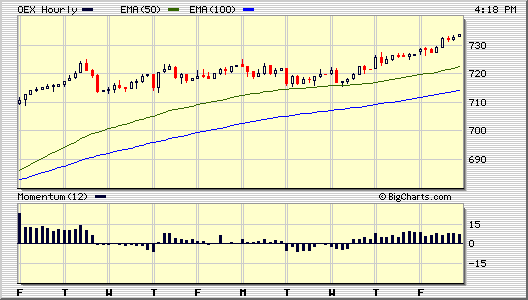VIX Spot Index to Include S P 500 Weekly Options Beginning Oc (Part 1) CBOE Options Hub
Post on: 21 Май, 2016 No Comment

Beginning Monday, October 6, 2014, CBOE will calculate the spot value of the CBOE Volatility Index ® (VIX ® ) using S&P 500 ® Index (SPX SM ) options with weekly and standard 3 rd Friday expirations that more closely bracket the 30-day target timeframe. While this change is not expected to have a dramatic impact on the spot VIX Index (see point 5 below), the change is a more precise enhancement to the VIX as the premier 30-day measure of the expected volatility of the S&P 500 Index.
- NO IMPACT ON VIX FUTURES AND OPTIONS
The addition of SPX Weeklys options to the VIX Index calculation will not impact the VIX futures and options contracts. The final settlement value for VIX futures and options will continue to use the same VIX Index formula and the opening prices of standard (i.e., third-Friday expiration) SPX option series with 30 days to expiration. Furthermore, the October 6 change will not directly impact the fair value calculations for VIX futures and options.
- BACKGROUND AND RATIONALE FOR USE OF NEW INPUTS
Since 2003, the VIX Index has been and will be designed to provide a constant, 30-day measure of the expected volatility of the S&P 500 Index. On most days of the month there is no S&P 500 option that expires in exactly 30 days, and so the VIX Index usually uses the expected volatilities for two different SPX options expirations, and then applies a weighting to develop a constant 30-day measure of expected SPX volatility.
Prior to the October 6 change, the VIX Index used nearby and second nearby SPX standard-expiration (third Friday) options with at least 8 days left to expiration, and then weighted them to yield the VIX (spot) Index. On some dates CBOE needed to do an extrapolation to calculate the VIX Index; for example, on Monday, August 11, 2014, the VIX Index used SPX options that expired on September 19 (39 days out) and on October 17 (67 days out), and then applied an extrapolation to develop a 30-day measure of the expected volatility of the S&P 500 Index.
Beginning on October 6, the VIX Index will use S&P 500 options (including SPXW Weekly options) with more than 23 days and less than 37 days to expiration, and then weight them to yield a constant, 30-day measure of the expected volatility of the S&P 500 Index. The addition of SPX Weeklys options will allow VIX Index spot values to be calculated with S&P 500 Index option series that more precisely match the 30-day target timeframe for expected volatility that the VIX Index is intended to represent.
As shown in the table below, in the calculations on October 6, the VIX Index will use SPXW options expiring 25 and 32 days out, whereas the legacy VIXMO Index will use SPX options expiring 11 and 46 days out.
- VIN & VIF – COMPONENT INDEXES
Two indexes that can help in the understanding of the calculation of the VIX Index, and that track the level of implied volatility from single SPX maturities are: (1) CBOE Near-Term VIX Index (VIN), which reflects the nearer term SPX expiration used in VIX calculation, and (2) the CBOE Far-Term VIX Index (VIF), which reflects the farther term SPX expiration used in VIX calculation. In looking at the 2-month end-of-day chart, one could note that there was a day that the difference between the VIN and VIF indexes was more than two volatility points, and that on each day from August 11 through August 14, the VIX was less than both VIN and VIF. It is expected that after October 6 the spread between VIN and VIF will be tighter, and that the VIX Index value usually will be within the VIN and VIF indexes.
- COMPARING PAST AND NEW VERSIONS OF VIX
At the VIX website CBOE provides a detailed spreadsheet for New VIX Intraday Price Comparison 5/22/14 through 9/16/14. The spreadsheet contains more than 120,000 “new VIX” values for informational purposes, but please note that the official new VIX values (using SPX Weekly options prices) begin dissemination on October 6. The chart below shows the values in the spreadsheet, and the average values were 12.37 for the new VIX and 12.47 for the VIX Index. The new VIX often was slightly higher than the VIX Index on “extrapolation” dates before the third-Friday expiration of SPX options (e.g., on Monday, August 11), and the VIX Index often was slightly higher than the new VIX around the first of the months.
- EARLIER (LEGACY) VERSIONS OF VIX INDEX
On October 6 there will be two earlier (legacy) versions of the VIX Index that will continue to be disseminated –
- Index Introduced in 2003 CBOE will continue to calculate and disseminate spot VIX Index values calculated using only standard SPX options. Beginning October 6, 2014, the legacy spot VIX Index values will be published under the new name CBOE S&P 500 Standard Monthly Only Volatility Index (ticker VIXMO).
- Index Introduced in 1993 The original version of the VIX Index used S&P 100 (OEX) options in its calculation, and is now known and disseminated as the CBOE S&P 100 Volatility Index (VXO).
- MORE INFORMATION
Rising interest in the VIX Index is shown by the fact that this year the average daily volume has grown to more than 188,000 for VIX futures and 640,000 for VIX options.
For more information on the VIX Index and the October 6 change (including links to Circulars, VIX White Paper (with detailed methodology), Press Release, spreadsheets, and charts), please visit www.cboe.com/VIX. A Part 2 Blog with more charts on this topic will be posted soon at CBOE Options Hub .














